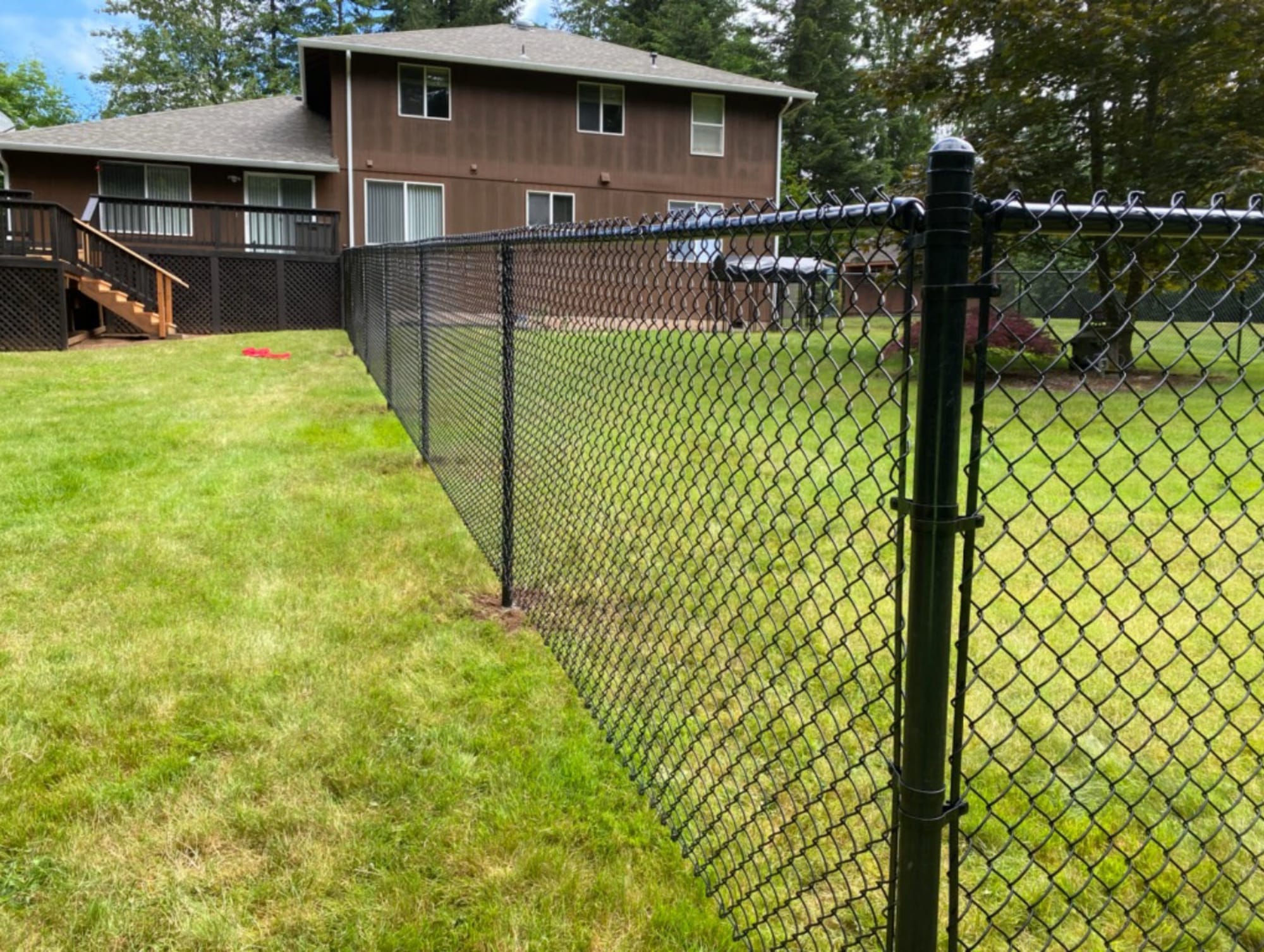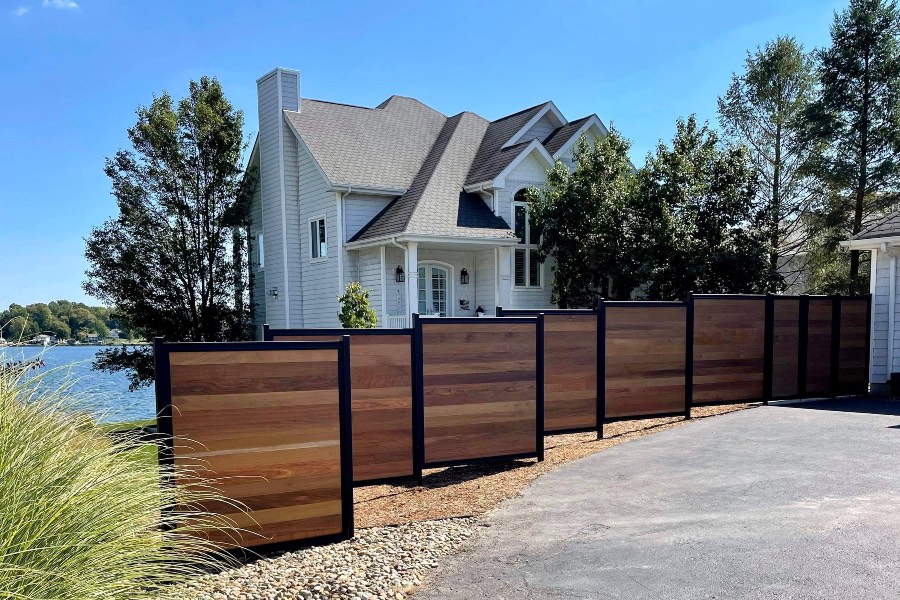All Categories
Featured
From hefty rainfall and snow to extreme sun and wind, weather-related damage is one of the most common causes of fencing wear and tear. While you can not regulate the weather condition, there are several ways to protect your fencing from the harmful impacts of weather and guarantee it lasts for years to come.
Wood Fences: While wooden fences are a classic option, they are highly vulnerable to wetness and pests. To make a wood fencing much more sturdy, choose for pressure-treated lumber, cedar, or redwood.
Vinyl Fences: Vinyl fencings are extremely long lasting and need little maintenance. They are immune to fading, breaking, and bending, making them optimal for areas that experience severe sunlight, rain, or winter. Plastic also will not rot or bring in parasites, providing long-term defense without the demand for continuous maintenance.
Steel Fences: Wrought iron and light weight aluminum fencings are excellent choices for their toughness and resistance to wind and moisture. Nonetheless, they are susceptible to rusting gradually, especially if revealed to frequent rainfall or moisture. Go with galvanized or powder-coated steel fences to minimize the threat of corrosion.
![]()
Composite Fences: Incorporating timber fibers and plastic, composite fences are immune to decomposing, fading, and pest damages. They use the appearance of timber with less maintenance, making them a perfect option for areas with variable weather conditions.
![]()
Wood Fences: A great top quality timber sealant or stain is important to safeguard your fence from the components. Wood sealants obstruct moisture and shield versus mold and mold growth. They additionally avoid UV damages that can trigger fading and cracking. Make certain to reapply the finishing every couple of years to keep your surround top condition.
Vinyl Fences: While plastic is low-maintenance, you can still shield it additionally by applying a UV protectant. These finishings assist protect against discoloration brought on by extended sun direct exposure. Furthermore, utilize vinyl-specific cleaners to keep the surface free of spots or dirt accumulation.
Metal Fencings: To safeguard metal fences from rust and deterioration, consider applying a rust-inhibiting guide adhered to by a safety paint designed for outdoor use. When possible, powder finish supplies a long lasting and lasting finish that can stand up to severe weather condition.
Wooden Fencings: Tidy your wooden fencing with a stress washer or a soft fabric and light cleaning agent. Inspect the fence on a regular basis for indications of rot, splits, or insect infestations.
Plastic Fences: Plastic fences are simple to tidy with soap and water. For harder spots, you can use a mild bleach solution or a vinyl cleaner to bring back the fencing's look. Don't fail to remember to check for any kind of cracks that may allow water in, bring about additional damages.
Metal Fencings: Clean steel fences with a soft fabric to get rid of dust, dirt, and corrosion. If you observe rust areas, remove them right away with a cable brush and treat the location with a rust-resistant guide or paint to avoid it from spreading out.
Wooden Fencings: When mounting wood fence blog posts, make certain they are established deeply right into the ground, preferably listed below the frost line to stop changing throughout freezing temperature levels. Use concrete to protect the posts and stop them from leaning or being uprooted by strong winds.
Metal Fencings: For metal fences, guarantee that the articles are securely anchored in concrete. This is especially important in regions with frequent storms or heavy winds. You might likewise wish to set up extra bracing to give additional assistance versus wind anxiety.
Additionally, excessive moisture from neighboring plants can cause mold and rot in wood fencings, so keep greenery at a secure distance to enable proper air movement and drainage.
Steel fencings should be checked for corrosion before the winter months period starts, and any kind of influenced locations should be treated with rust-resistant products. Furthermore, applying a layer of paint or protective coating before the winter sets in can aid protect your fence from ice and snow damage.
![]()
Verdict. Securing your fencing from weather-related damage requires a mix of correct material choice, routine maintenance, and aggressive treatment. Whether you have a wood, vinyl, steel, or composite fencing, the ideal safety steps can extend its lifespan and maintain its appearance. By adhering to these basic yet effective steps, you can secure your fence versus the aspects and maintain it looking fantastic for several years to come.
- Select Weather-Resistant Materials. One of the most reliable methods to secure your fencing is by picking the appropriate product for your environment. Particular materials are much more sturdy and much better fit to endure details weather.
Wood Fences: While wooden fences are a classic option, they are highly vulnerable to wetness and pests. To make a wood fencing much more sturdy, choose for pressure-treated lumber, cedar, or redwood.
Vinyl Fences: Vinyl fencings are extremely long lasting and need little maintenance. They are immune to fading, breaking, and bending, making them optimal for areas that experience severe sunlight, rain, or winter. Plastic also will not rot or bring in parasites, providing long-term defense without the demand for continuous maintenance.
Steel Fences: Wrought iron and light weight aluminum fencings are excellent choices for their toughness and resistance to wind and moisture. Nonetheless, they are susceptible to rusting gradually, especially if revealed to frequent rainfall or moisture. Go with galvanized or powder-coated steel fences to minimize the threat of corrosion.

Composite Fences: Incorporating timber fibers and plastic, composite fences are immune to decomposing, fading, and pest damages. They use the appearance of timber with less maintenance, making them a perfect option for areas with variable weather conditions.
- Apply Protective Coatings. No matter of the material, using safety finishings is vital in prolonging the life of your fencing. Coatings form an obstacle that guards your fencing from dampness, UV rays, and various other ecological stressors.

Wood Fences: A great top quality timber sealant or stain is important to safeguard your fence from the components. Wood sealants obstruct moisture and shield versus mold and mold growth. They additionally avoid UV damages that can trigger fading and cracking. Make certain to reapply the finishing every couple of years to keep your surround top condition.
Vinyl Fences: While plastic is low-maintenance, you can still shield it additionally by applying a UV protectant. These finishings assist protect against discoloration brought on by extended sun direct exposure. Furthermore, utilize vinyl-specific cleaners to keep the surface free of spots or dirt accumulation.
Metal Fencings: To safeguard metal fences from rust and deterioration, consider applying a rust-inhibiting guide adhered to by a safety paint designed for outdoor use. When possible, powder finish supplies a long lasting and lasting finish that can stand up to severe weather condition.
- Normal Cleansing and Evaluations. Correct cleansing and regular assessments are crucial to keeping the integrity of your fencing. Accumulation of dirt, particles, and mold can catch moisture versus your fence and cause long-term damages.
Wooden Fencings: Tidy your wooden fencing with a stress washer or a soft fabric and light cleaning agent. Inspect the fence on a regular basis for indications of rot, splits, or insect infestations.
Plastic Fences: Plastic fences are simple to tidy with soap and water. For harder spots, you can use a mild bleach solution or a vinyl cleaner to bring back the fencing's look. Don't fail to remember to check for any kind of cracks that may allow water in, bring about additional damages.
Metal Fencings: Clean steel fences with a soft fabric to get rid of dust, dirt, and corrosion. If you observe rust areas, remove them right away with a cable brush and treat the location with a rust-resistant guide or paint to avoid it from spreading out.
- Reinforce Your Fence with Proper Setup. Proper installment is just one of the most efficient ways to prevent weather-related damages. A fence that is improperly mounted is a lot more most likely to collapse or endure damage throughout storms.
Wooden Fencings: When mounting wood fence blog posts, make certain they are established deeply right into the ground, preferably listed below the frost line to stop changing throughout freezing temperature levels. Use concrete to protect the posts and stop them from leaning or being uprooted by strong winds.
Metal Fencings: For metal fences, guarantee that the articles are securely anchored in concrete. This is especially important in regions with frequent storms or heavy winds. You might likewise wish to set up extra bracing to give additional assistance versus wind anxiety.
- Trim Trees and Bushes Near Your Fencing. Overgrown trees and bushes can create substantial damage to your fencing, particularly throughout heavy tornados or high winds. Tree branches can scuff versus the fence, causing scrapes, and their origins can undercut the posts. Maintain plant life cut and guarantee that tree branches are not leaning on or near the fencing.
Additionally, excessive moisture from neighboring plants can cause mold and rot in wood fencings, so keep greenery at a secure distance to enable proper air movement and drainage.
- Winterize Your Fence. If you reside in a location with rough wintertimes, take extra safety measures to shield your fencing from freezing temperatures, snow, and ice. For wood fencings, make certain the base of the messages rises above ground level to avoid water build-up, which can split the timber and ice up. Take into consideration utilizing a dampness barrier around the base of the articles to maintain them completely dry during the cold weather.
Steel fencings should be checked for corrosion before the winter months period starts, and any kind of influenced locations should be treated with rust-resistant products. Furthermore, applying a layer of paint or protective coating before the winter sets in can aid protect your fence from ice and snow damage.
- Post-Storm Repair works. Storms can trigger immediate damage to your fence, consisting of dropped branches, busted posts, or dislodged panels. After each storm, inspect your fencing extensively to look for any noticeable damage. Address minor concerns rapidly before they become bigger, a lot more pricey fixings. It's an excellent idea to get in touch with an expert for fixings to guarantee it continues to be structurally sound. if your fence has been significantly harmed.

Verdict. Securing your fencing from weather-related damage requires a mix of correct material choice, routine maintenance, and aggressive treatment. Whether you have a wood, vinyl, steel, or composite fencing, the ideal safety steps can extend its lifespan and maintain its appearance. By adhering to these basic yet effective steps, you can secure your fence versus the aspects and maintain it looking fantastic for several years to come.
Latest Posts
Find Out Reduce Expenses on Car Maintenance with Montclare Auto Repair’s Limited-Time Deals
Published May 26, 25
1 min read
Uncover Oil Changes & More: Complete Services Guide from Montclare Auto Repair
Published May 25, 25
1 min read
Unlock Your Financial Partner at WyHy – Top Benefits for Your Money Goals
Published May 25, 25
1 min read
More
Latest Posts
Find Out Reduce Expenses on Car Maintenance with Montclare Auto Repair’s Limited-Time Deals
Published May 26, 25
1 min read
Uncover Oil Changes & More: Complete Services Guide from Montclare Auto Repair
Published May 25, 25
1 min read
Unlock Your Financial Partner at WyHy – Top Benefits for Your Money Goals
Published May 25, 25
1 min read